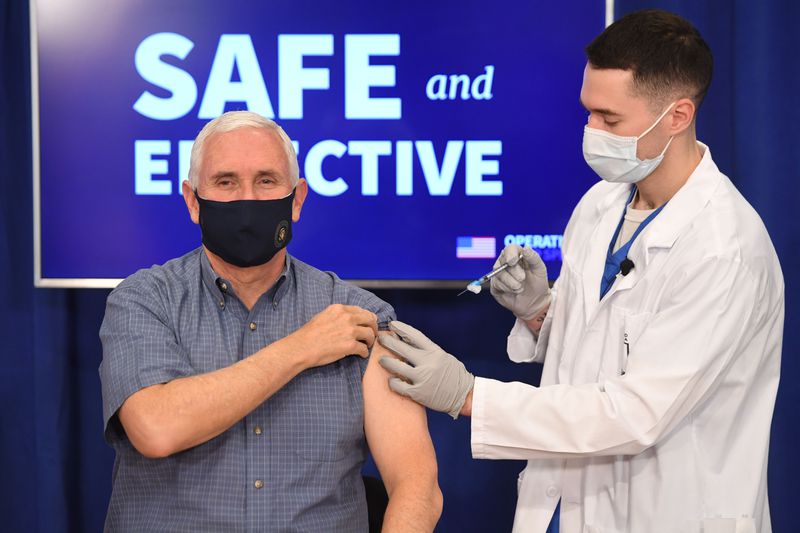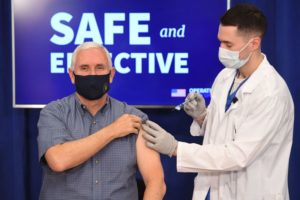

They implicitly threw away markets in favor of central planning.
An advance market commitment for Covid-19 should combine “push” and “pull” incentives. The “pull” incentive is the commitment to buy 300 million courses of vaccine at a per-person price of $100, for vaccines produced within a specified time frame. If multiple vaccines are developed, the A.M.C. fund will have authority to choose products to purchase based on efficacy, the availability of sufficient vaccine for timely vaccination or suitability for different population groups. So firms compete to serve the first 300 million people with the most attractive vaccines, and the “pull” component provides strong incentives for both speed and quality.
This is from Susan Athey, Michael Kremer, Christopher Snyder and
Here’s the problem: Once the companies produce the vaccine and sell it to the government, what assures that the vaccine will be distributed well and quickly? I wrote about this earlier this month in David R. Henderson, “Vaccines’ Last Hurdle: Central Planners,” Defining Ideas, December 4, 2020.
Essentially what we have is government as monopsonist: monopoly buyer buying something valuable and then distributing this valuable item at a zero price. From what I can gather from reading about Pfizer, it has done its job admirably. But central planning, rather than markets and pricing, is being used to distribute the vaccine.
This isn’t the fault of Athey et al. And it’s conceivable that they had zero impact on Operation Warp Speed so the mess-up might not be their fault. But they hoped to affect the outcome. So, given the huge stakes, it would have been nice, in a longer than usual NY Times op/ed, for the authors, all talented economists, to spend at least a paragraph making clear that the drug companies should be free to sell the drug. They might have wanted to advocate a price cap of, say, $100, but a price of $100 gives better incentives than a price of $0.

READER COMMENTS
john hare
Dec 31 2020 at 5:03am
Given my work situation (outside in sunshine) and general habits, I will wait a considerable time before choosing to get the vaccine, and may eventually choose to skip it altogether. However, if my situation were different (indoors with much personal contact), I would be willing to go $1,000.00 to get immunized. The ROI would pay back in about a week if it allowed me to work just an extra week. But if I considered myself to be high risk and had a much more valuable time situation (corporate mover and shaker?), I could see $10k-$100k fairly easily.
The wealthy at risk would for the most part have no problem in subsidizing the rest of us in that manner.
Thomas Hutcheson
Dec 31 2020 at 7:24am
I think your decision criteria is somewhat flawed in that it does not seen to include any consideration of getting vaccinates in order to reduce the chance of becoming infected and passing the infection on to other people. Granted that the same factors that push you to get vaccinated for your own protection works for the other, but on the margin, you should be more willing to be vaccinated if you are thinking of others.
John hare
Dec 31 2020 at 1:55pm
I can see where I give that impression, and it is true to some extent. The thing is that the same factors that make me low risk are the same ones that make me low risk to others as well. And if my situation were higher risk, then my willingness to pay would also benefit others. I trust my judgment in my specific situation better than I trust that of some bean counter.
Felix
Dec 31 2020 at 9:54pm
Precisely. If the CEO mover/shaker thinks he has so much personal contact that $100K is worth it, then the people he meets will also benefit by the same amount, assuming he judged its worth correctly. The infectability goes both ways. And if he didn’t judge his worth correctly, whether by miscalculation or just big ego, he still subsidizes many vaccinations for others.
Thomas Hutcheson
Dec 31 2020 at 6:26am
Letting the drug companies sell a part of the vaccines produced seems like a good idea. How much? How do we decide?
Cobey Williamson
Dec 31 2020 at 10:03am
First, there is no such things as “markets” and “central planning”. The line between their historical definitions is so blurred as to make any argument from either side of it laughable.
Second, no company should receive any more money for a vaccine than the actual cost to produce it. None of these companies did ANY of the R&D on these solutions. It was funded in its entirety by public sources.
Mark Z
Dec 31 2020 at 12:02pm
Your first paragraph is obviously false.
On your second one, where did you get that the companies did no research at all on the vaccines? The government did all of it, just handed them the formula for a vaccine and they made it? I don’t think that’s true.
Moreover, why shouldn’t any company ever be ‘allowed’ to earn a profit on anything that’s at all publicly funded? If they’re able to make a profit it’s because they’re still adding surplus value beyond what the cost is, and profit serves the same purpose attracting investment. There is no reason whatsoever why a publicly subsidized industry (inasmuch as the public subsidies are actually warranted by positive externalities) should not earn profits like any other.
Jon Murphy
Dec 31 2020 at 2:10pm
Two days ago, you said there was a clear difference between the market and central planning, and that the problem was markets do not work in a world of scarcity (still wondering why that is the case). Today, there is no difference. What made you change your mind in the past 48 hours?
JFA
Dec 31 2020 at 2:18pm
“None of these companies did ANY of the R&D on these solutions. It was funded in its entirety by public sources.” FALSE.
Moderna had been collaborating with NIAID on (I believe) Zika or AIDS. Moderna brought a lot of the technology to the table, but that specific application was being funded by the NIH. Moderna has also in the past (in 2016 I believe) received funding from the Gates Foundation. Moderna has also developed therapeutics for other applications (not just vaccines). To say that Moderna did not fund any of its own R&D is patently absurd. The reason why they were collaborating with NIAID is because of the technology Moderna developed. If I’m not mistaken, most of the money Moderna received for the Covid vaccine was for running the clinical trial, not for developing the vaccine (which they did within a couple of days of the virus’ genome being published).
Jon Murphy
Dec 31 2020 at 2:26pm
According to the OWS website, the federal government only funded companies that already had developed a vaccine. These companies had to show they had something that could conceivably work before they got funding.
Comments are closed.